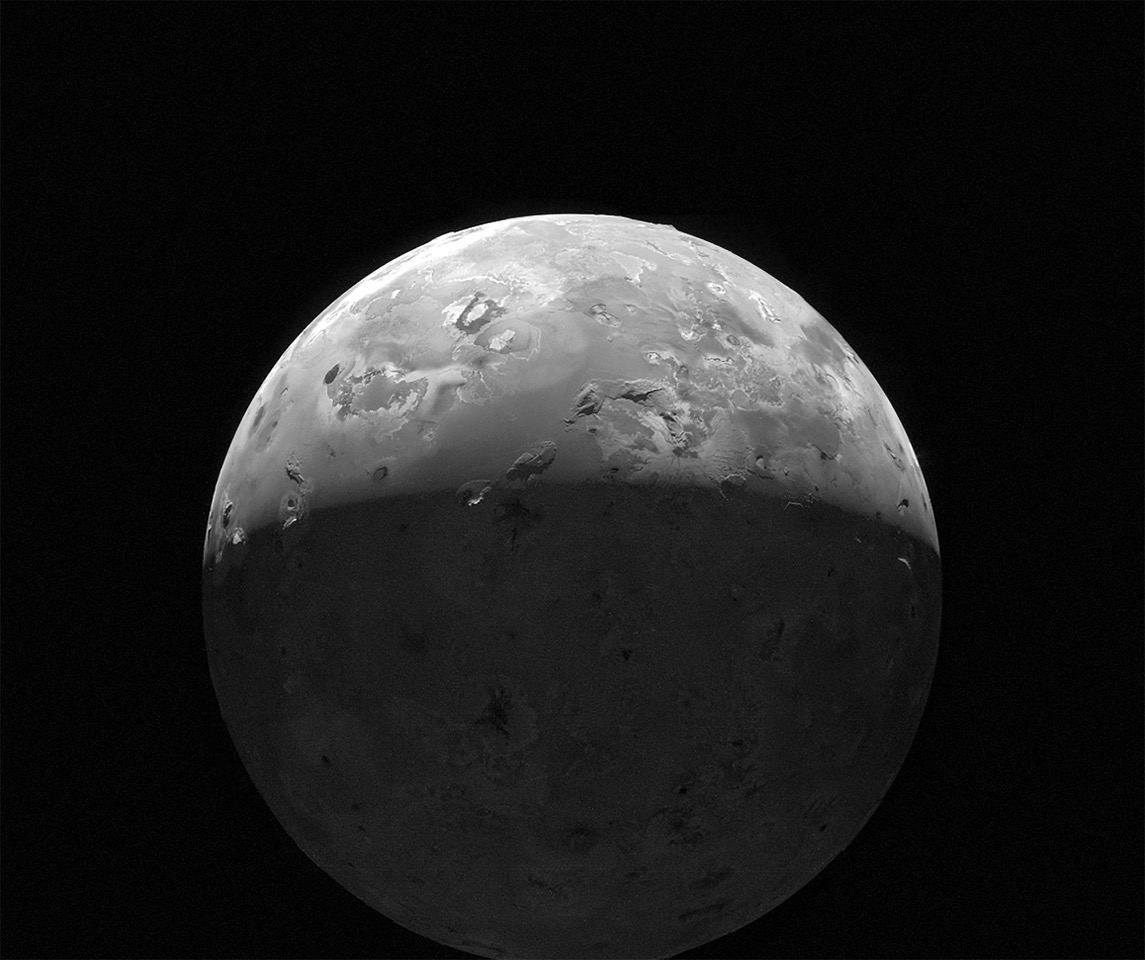The Juno spacecraft has revealed some fascinating things about Jupiter since it began exploring the system on July 4th, 2016. Not only is it the first robotic mission to study Jupiter up close while orbiting it since the Galileo spacecraft, which studied the gas giant and its satellites from 1995 to 2003. Juno is also the first robotic explorer to look below Jupiter’s dense clouds to investigate the planet’s magnetic field, composition, and structure. The data this has produced is helping scientists address questions about how Jupiter formed and the origins of the Solar System.
Since 2021, the probe has been in an extended mission phase, where it has been making flybys of some of Jupiter’s largest moons, including Ganymede, Europa, and Io. As it passes these satellites, Juno has captured some incredible images with its main imaging instrument, the JunoCam. On Saturday, February 3rd, 2024, the Juno spacecraft made another flyby of Io and took more captivating photos of the volcanic moon and its pockmarked surface. This was the second part of a twin flyby designed to provide new insight into Io’s volcanic nature and the interior structure of the satellite.
The previous flyby occurred on December 30th, 2023, and (like this latest flyby) brought the spacecraft within 1,500 km (930 mi) of Io’s surface. The two flybys are the closest that any spacecraft has ever made of Io, breaking the previous record established by Juno during the flyby that occurred on October 15th, 2023, where the probe reached a minimum distance of 12,000 km (mi) from the moon’s surface. No spacecraft has passed this close to Io since the Galileo mission buzzed the volcanic moon over twenty years ago.

As always, raw images captured during flybys are available on the mission’s Southwest Research Institute (SwRI) website, where people can upload, process, and colorize them. One particular image processed by citizen scientist Emma Wälimäki (see above) shows the moon’s dark side was lit by sunlight reflected by Jupiter (aka. “Jupitershine”). Other images provided by Juno include the many infrared images that show the many active volcanoes on the moon’s surface and even eruptions that were visible during flybys because they occurred on the moon’s dark side.
These images are part of an investigation by scientists to determine if Io’s active volcanoes are powered by a global magma ocean beneath its surface. Based on current geological models, scientists believe this magma ocean results from tidal flexing in Io’s interior caused by interactions with Jupiter’s powerful gravity. This is similar to what Europa and other icy satellites are believed to experience, where tidal flexing leads to hydrothermal activity at the core-mantle boundary that maintains oceans of liquid water in the interior.
As of this article’s publication, the Juno mission has operated for twelve years, five months, and twenty-seven days. Per its mission extension, the probe will continue to orbit Jupiter from pole to pole until September 2025, though this could be extended further. As long as Juno’s solar panel wings (the largest ever deployed) continue providing power, the mission will continue to study the system and address the fundamental questions of how Jupiter and its satellites came to be.
More images are available at the Juno mission website at the Southwest Research Institute (SwRI).
Further Reading: Mission Juno SwRI

